Our Blog
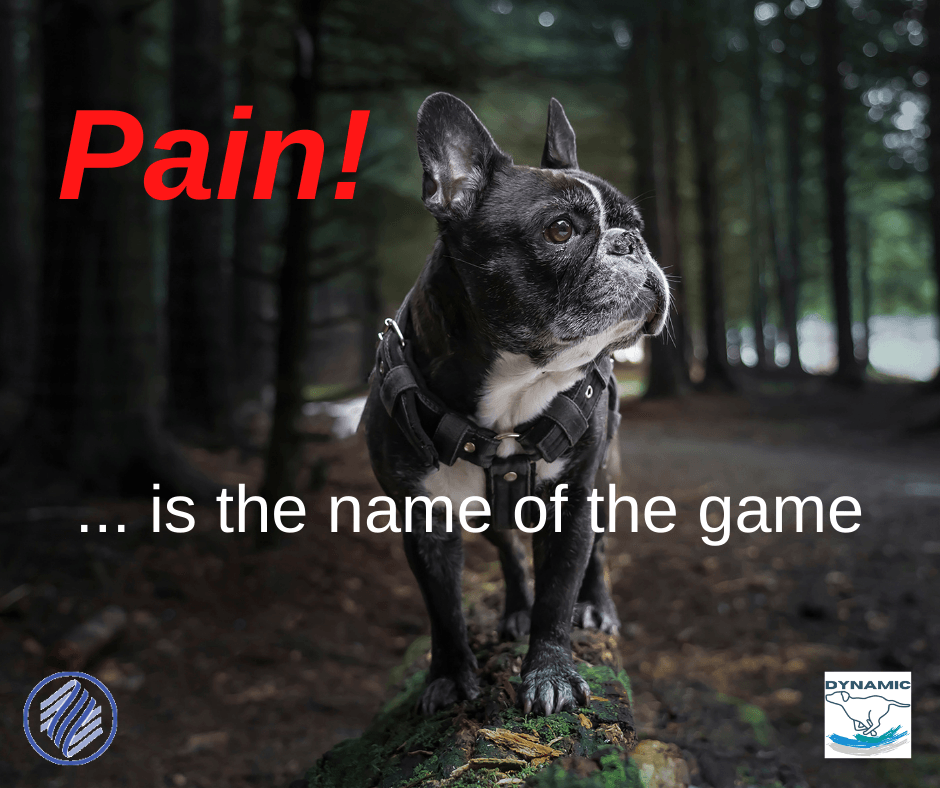
By Gemma Hodson
•
September 9, 2021
It’s everywhere at the moment and rightly so. However, the emphasis always seems to be that pain and discomfort creeps up on a dog, but this is not the case for all. In fact often the subtle signs were there long before the more obvious, but we were too blind to see. I want to highlight the dogs that have always been slow, lacked enthusiasm on a walk, the ones that have been labelled difficult, aggressive or reactive. The ones with the funny looking gait, who sit or stand slightly odd and ALWAYS HAVE.Just because they have always been like that, doesn’t mean it should be classed as normal and certainly doesn’t mean we should do nothing to help. I spent years at Hartpury College (UWE) studying horses where, even at a basic level, you get taught what made up a horse from the inside out, how each system worked, and why this was important information to know so we could keep our horses in optimum health for optimum performance and how all this impacts on behaviour. Not one system within the body operates on its own without it involving or impacting on another. It is exactly the same for dogs. A lot of the physical issues with dogs are developmental meaning that the condition developed as the dog was growing … right from puppyhood. Owners are unaware of how the health of their dog impacts on the emotional wellbeing and find it hard to make the connection between pain and behaviour. You only know, what you know and that’s fine, but there is a lot more we can do as dog professionals. We focus too much on the outward behaviour - even when we know there are contributing factors to it; diet, environment, past experience, equipment, handling and health (to name a few), but we are in a world where the physical affects the mental - pain affects behaviour. It is to a point that I have spent the last 5 years of self-employment working with those dogs and their humans. For those that don’t know about the study on Pains Affect’s on Behaviour in Cats & Dogs by Daniel Mills in Lincoln University - he found that approximately between 50 - 80% of dogs in the study that presented with behavioural issues had some form of undiagnosed pain. It is a rapidly growing concern. If you are a dog trainer or behaviourist and you think that you don’t need to know canine anatomy & physiology to do your job then sadly, you are missing so much of the dog in front of you. If you think that understanding how a dog moves and uses their body in day to day life is boring and has nothing to do with what you do then you are mistaken. Get Interested, start looking. The amount of time trainers and behaviourists spend with their clients compared to Vets is infinitely more! Those that do puppy and follow on classes, socialisation classes, hoopers, agility, 121 sessions, you could potentially help spot conditions before they negatively impact on the dog and help support the client alongside the Vet. Why are we waiting for a dog to go lame before we consider they might be in pain? I encourage you to learn about other things that will help you to understand what’s going on for a dog; crazy coat, body & facial tension, what healthy movement looks like so you can easily see the poor, weight shifting, loss of muscle mass and tone, good/poor conformation, breed specifics. Thankfully there are an ever growing number of my students that have graduated my course with this new knowledge and are changing the lives of dogs who were previously mis-labelled due to their behaviour. Those dogs are now on adequate pain meds, getting the support from a therapist such as a physio or hydro and the dog and human are getting relief. A little bit of information can go a long way in changing everything for a dog.
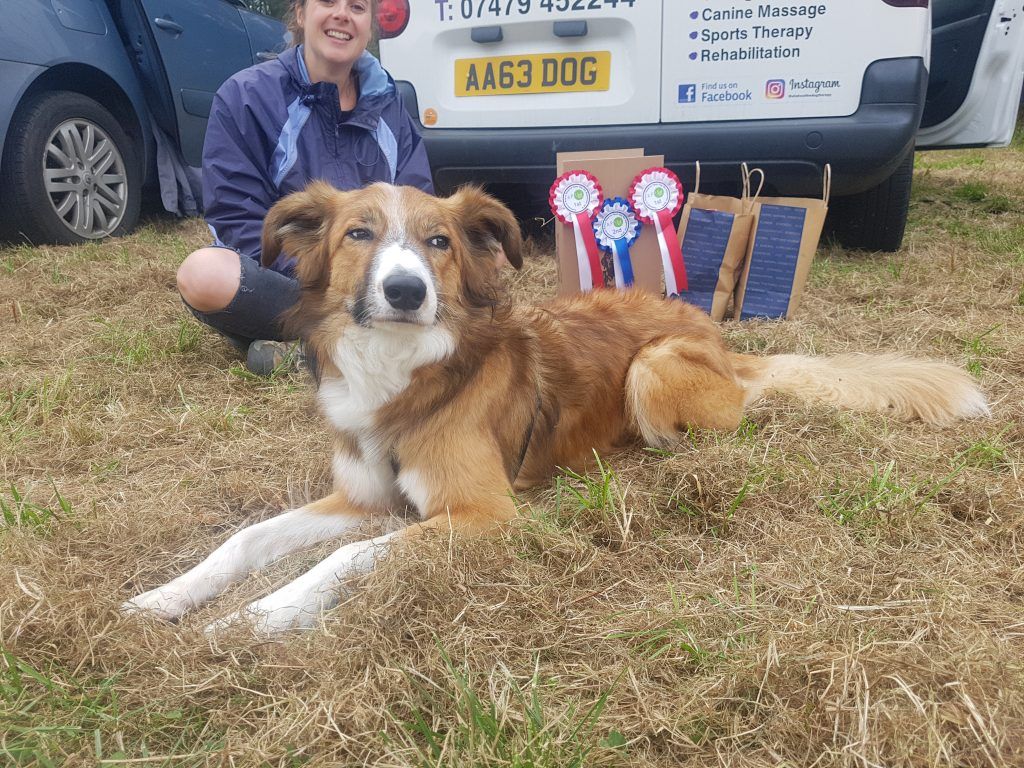
By Fay Thomas
•
May 23, 2019
I read all sorts of ‘helpful’ articles online that said if your dog ever shows aggressive tendencies you shouldn’t encourage them to play games like tug-of-war. This is false, it helps release a lot of tension and energy – in fact it’s Tag’s favourite game and he will try and play it all of his toys, even balls, he’s not fussy. I am going to be upfront about resource guarding – there is no magic cure, he will always resource guard however the items he guards are now fewer and we can go days and weeks without any guarding. But then we can have times where it feels like we’ve stepped backwards. At the time I’m finishing this off he has spent the whole week hiding my slippers in his bed. They key to resource guarding, and I learned this the hard way, is not to shout, chase after them, try and snatch the item out of their mouth etc. – none of that helps, in fact it makes the whole situation worse. You get stressed and irritated, the dog gets more possessive as it too is getting stressed. The key was playing swapsies with him – finding something to exchange for the stolen treasure. This could be a favourite toy or food. Most often food worked better for Tag when in the house, however if you put the food near him and then try to pick up the stolen item that he’d dropped next to it this was usually a fail. We had to start slowly, show him the food, get his interest in it and then throw it away from ourselves. This usually led to the item being dropped where he was stood so that he could go to the food – much safer in my opinion than a battle of reflexes, (and let’s be honest a dog will always win that!). For a whole it was a 2-person job as well – mostly because I was still petrified as to how he would react. Over time I started to add the word ‘drop’ and Tag started associating the link between the word, dropping an item and receiving food. Additionally we practiced ‘drop’ a lot at training with his toys so the word became associated with fun as well – he dropped the toy which meant it got thrown away for him to chase. I have to say this really became a beautiful skill and he passed his impulse control element of APDT with flying colours first time around, (not bad for a resource guarding dog).
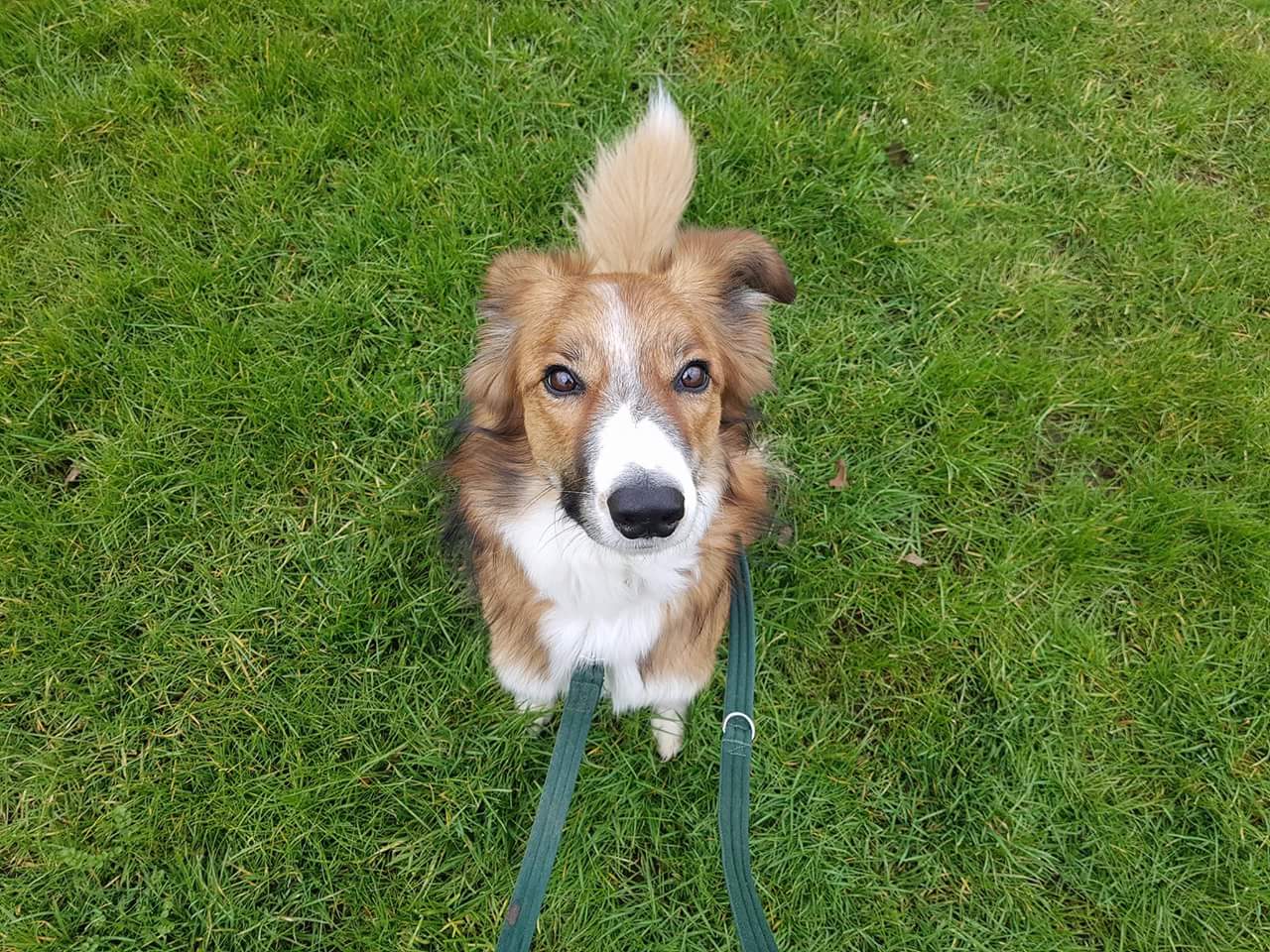
By Fay Thomas
•
May 23, 2019
But, this wasn’t his only issue so this issue will tell you about the other difficulties he also presented with. Before I do, I am going to apologise. I have always worked very hard not to use aversive training methods with Tag, reward based training has been the key, however, not all of the methods have quite followed the rule – so I am sorry. There were times where it felt like we had tried everything else and couldn’t think of any other solution. I do now however seek advice and enlist help to ensure future methods are up to date, reward based and force free. You only know what you know and at the time I thought I was doing the right thing I now know differently. Poop! So let’s get the unpleasant topic out of the way first – poop! Tag ate his own poop, he’d circle around, do his thing and before you knew it he was turning around and gobbling it up. Absolutely disgusting!! I am not sure why he did this so I did a lot of research online at the time. It may have been a lack of something in his diet so he was trying to re-digest the food (or something along those lines), another reason may have been having his nose rubbed in his own faeces whilst he was being house-trained by his first owners or finally it may have been that having lived in a kennel for a month and therefore his poop not being cleared up straight away he got into a habit of eating it to keep his ‘home’ clean. Now I am absolutely positive that there were much better ways of handling this but in the end my ex resorted to following Tag around the garden when he was let outside and sprinkling chilli powder onto his poop before he had chance to eat it. When Tag did try to pick it up he got a bit of a shock and put it straight back down. After a short while Tag stopped trying to eat his own poop and I’m pleased to say he hasn’t ever tried to take that habit back up. Car Chasing Another habit Tag had was car chasing. You would be quite happily walking down the street towards the field when a car would drive past and suddenly Tag yanks the lead so hard to chase it you almost go flying. If you didn’t let him chase the car he would just try again, and again, and again! Tag absolutely loves walks so whenever he chased a car I would just stop walking, sometimes I would even sit in the middle of the pavement, and we would stay there until several cars had gone past and he hadn’t reacted. As a reward we would start walking again. I’d love to say I brought clicker training into this and lots of tasty food but Tag is so excited by the world he mostly couldn’t care less what food you have in your pocket when you leave the house. Eventually Tag stopped chasing cars and I could walk down the street without fear of being pulled into a road. Now and again he might try and jump towards a car but it seems he only does it these days if he is particularly tense or we’ve had some pretty extreme weather – cars make a lot more noise when they are on a wet road.
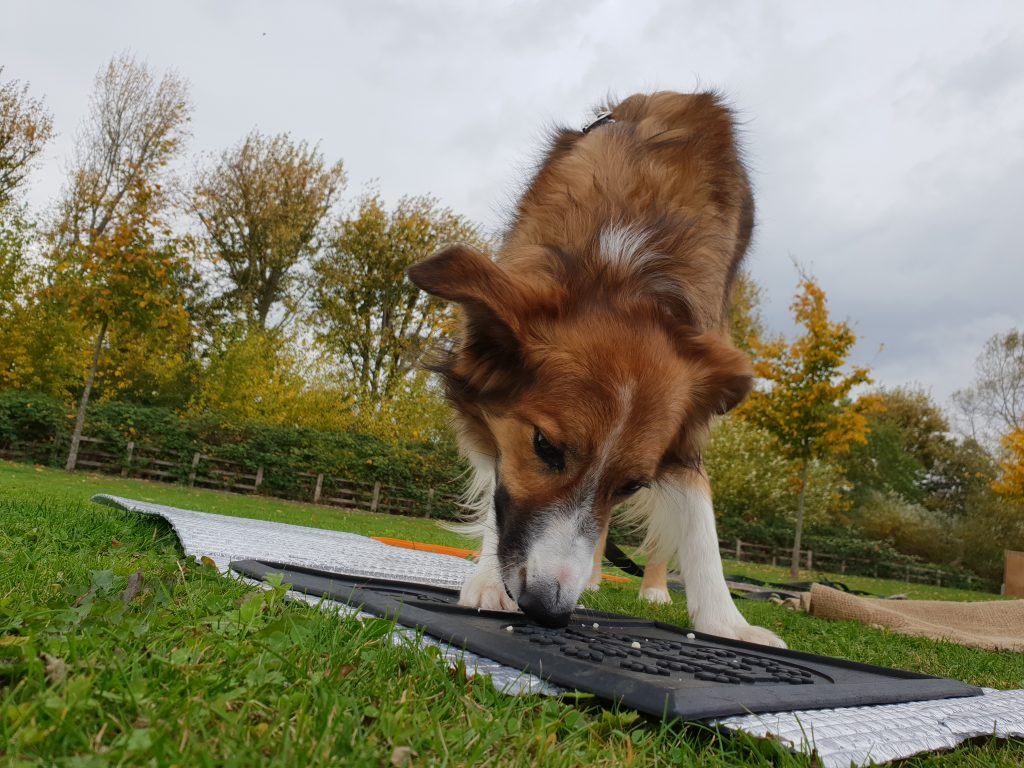
By Fay Thomas
•
May 23, 2019
I wanted to be a responsible owner so even before he had his first night in the house I was calling dog training companies to help him learn basic obedience skills. This wasn’t as easy as it might sound. A lot of company’s offer puppy training classes and although he was technically still a puppy he was considered too old to participate. Fortunately I found ‘Naturally Clever Canines’ who held classes for ‘Beginner’s Training’ – the age of the dog didn’t matter but it was aimed at Dog’s who had never been trained. Perfect!! And well, both Helen and Correna were and still are fantastic, so supportive and were so understanding of Tag’s background. There were definitely things that Tag struggled with when working towards his ‘Good Companion Awards’ – notably body touching – but both of them worked with him at his own pace, we took it step-by-step and week-by-week and whenever he showed signs of it all being a bit too much, we stopped. He passed every test and we have all of the rosettes to prove it! If I could give you any advice for bonding with your dog I would recommend going to a Training Class. I have always worked full-time from the day Tag came home and the least I could give him was 1 hour of my undivided attention each week. He got 1 hour in a local community centre learning new things with me, we learned together without the distractions that come with being at home, (cooking dinner, the housework, something on TV – you know what it’s like). Also, I can’t say it enough – patience, understanding and don’t give up!

By Fay Thomas
•
May 23, 2019
The story of moving house somewhere that would ‘consider pets’, the fight to get landlord permission is a whole other story but the Estate Agent said he didn’t think it would be a problem when I looked around the house…… so the search for a dog began. Now I didn’t care what breed of dog I got my only requirements were that I didn’t get something tiny but equally I needed to be realistic, not something too big because well it’s not like I had a huge house or a huge garden. Also I was pretty set on re-homing a rescue dog, because, well, anyone can buy a puppy right? I wanted to give a dog a chance, that for no reason of their own, had been given up by their previous owners. Where I live the local Animal Shelter is FULL of Staffordshire Bull Terriers. Personally, I think they are cute but my now ex-partner was adamant that he did not want a Staffy. He was also pretty adamant he didn’t want a short-haired dog. Now came the dilemma, he wanted a Husky or a Collie – well you can see from the pictures he got his own way – Tag is most definitely a Collie!
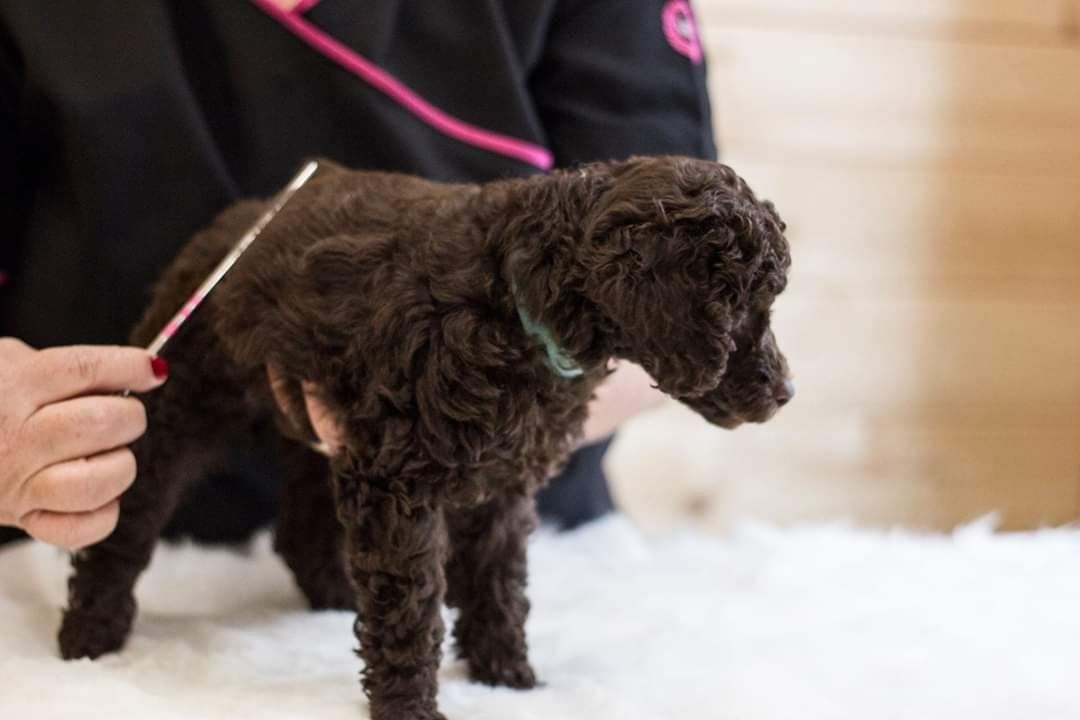
By Sue Williamson
•
May 23, 2019
Firstly, grooming can become a good bonding opportunity for you and your dog, especially if you build up confidence and trust gently from a very young age. For some owners the issue isn’t that they don’t know how to brush their dog correctly, it is that they go straight in and expect to be able to brush their dog head to tail in one go, then make it into a battle when their dog doesn’t like it, tries to bite the brush or hand, or runs away and hides at the sight of a brush. There is help at hand to overcome these issues, Gemma (All About the Dog – Therapy) will be happy to help with this, or attend one of my workshop where I can teach you a number of trust based techniques to build up confidence. Grooming is also a good opportunity for you to check over your dog for lumps, bumps, cuts and grazes, and those nasty grass seeds, ticks and fleas!! Short hair dogs, such as labradors, staffies, etc, will also benefit from regular brushing. I personally love the Kong Zoom Groom for short haired breeds. For those dogs with longer coats, regular grooming with a good quality slicker brush will enable you to keep your dogs coat free of mats.
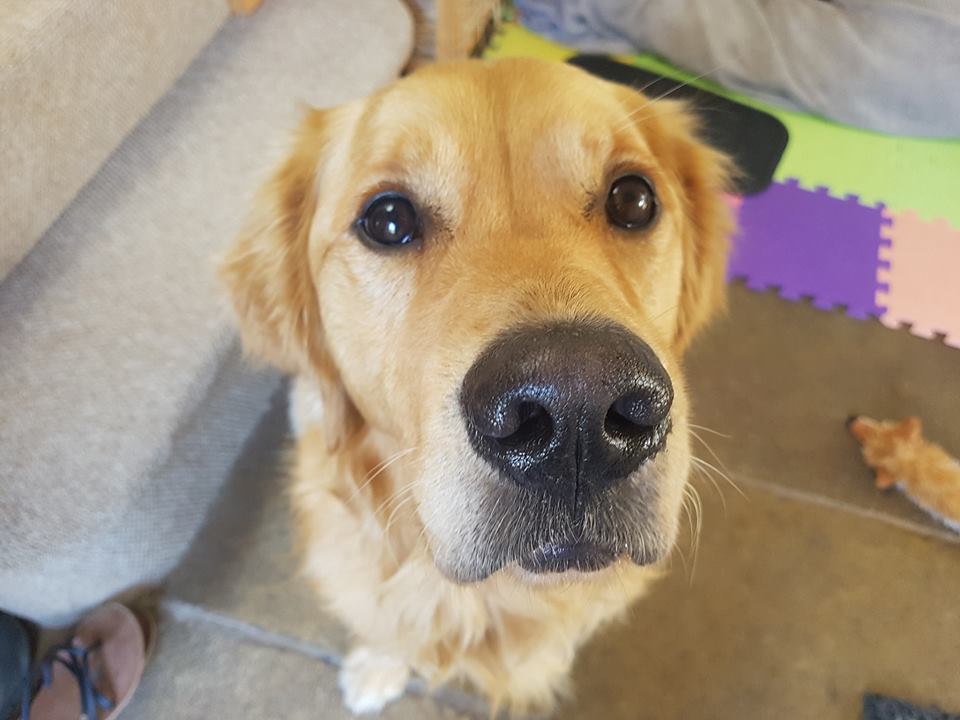
By Gemma Hodson
•
May 23, 2019
After performing a superficial muscle palpation on Milo I could find no issue with his back, however he did sit down rather quickly and he turned to look at my hand when I went inside the top of his left hind limb. On further investigation I found quite a bit of heat and swelling right up deep inside his groin (iliopsoas muscle), where it felt like a bag of marbles. Tearing of the iliopsoas muscles is usually the result of excessive stretching consistent with that of splaying of the legs due to slipping or high energy games such as chasing after a tennis ball, jumping off high objects, excessive training or play with other dogs. Tearing of this muscle can be extremely painful and can cause lameness. This definitely fitted what Milo had and was experiencing. As part of my training/coursework case studies I treated Milo using remedial massage on 4 separate occasions following his injury to which he dramatically improved and returned to his normal self. Four months later the injury reoccurred although not to the same extent. Newly qualified in Canine Sports Therapy I returned to reassess Milo. He was lame again on his left hind and not fully weight bearing. As well as the issues with the iliopsoas muscle returning his hamstrings were now also tight. There was also significant muscle wastage of the biceps femoris, but what struck me the most was the coat change over both of his stifle joints. What was usually a sleek glossy deep golden in colour coat had become light fluffy and fuzzy in texture – this was something my TTouch Practitioner training was telling me to make a note and investigate further!
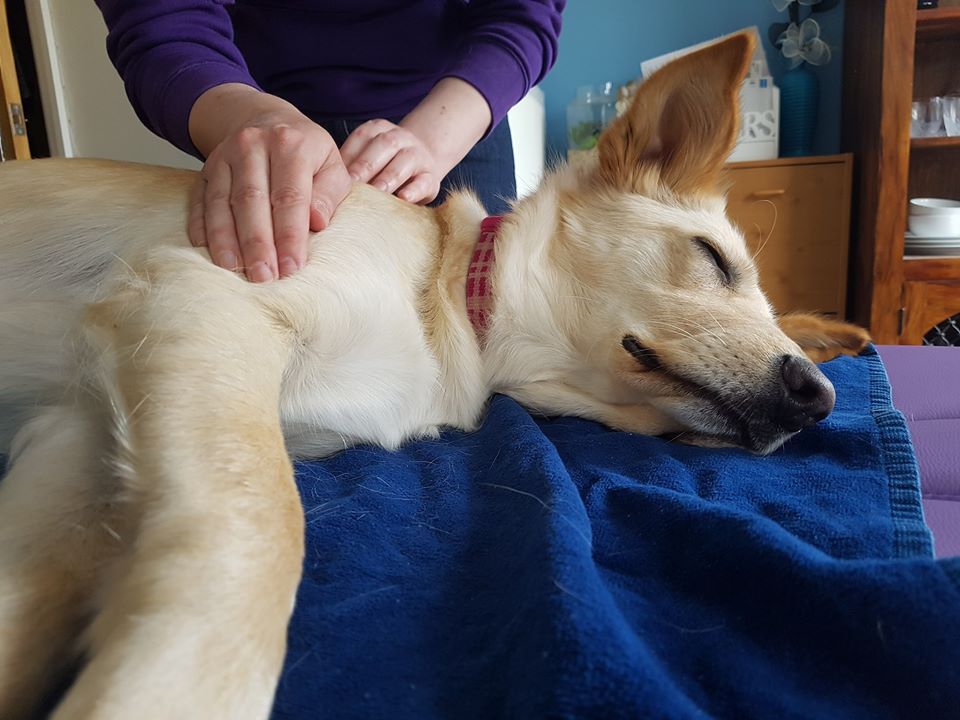
By Gemma Hodson
•
May 23, 2019
What is Vet Consent? If you want your dog to undergo physiotherapy, hydrotherapy, massage therapy, sports therapy, galen therapy or acupuncture the therapist must obtain vet consent before treatment can begin. It is a legal requirement for a therapist in order to treat your pet and relates directly to the Veterinary Surgeons Act 1966 and Exempt Order 2015. Why should I obtain Vet Consent? Other than it being law it is a way for your pets therapist to ascertain if there are any reasons as to why treatment should be avoided, also known as contraindicated. This could be a simple as the vet advising care should be taken in certain areas due to surgery or injury, or that the treatment should be avoided altogether in the likelihood the animals condition is exacerbated for example if your dog is taking certain types of medication or has a serious illness.
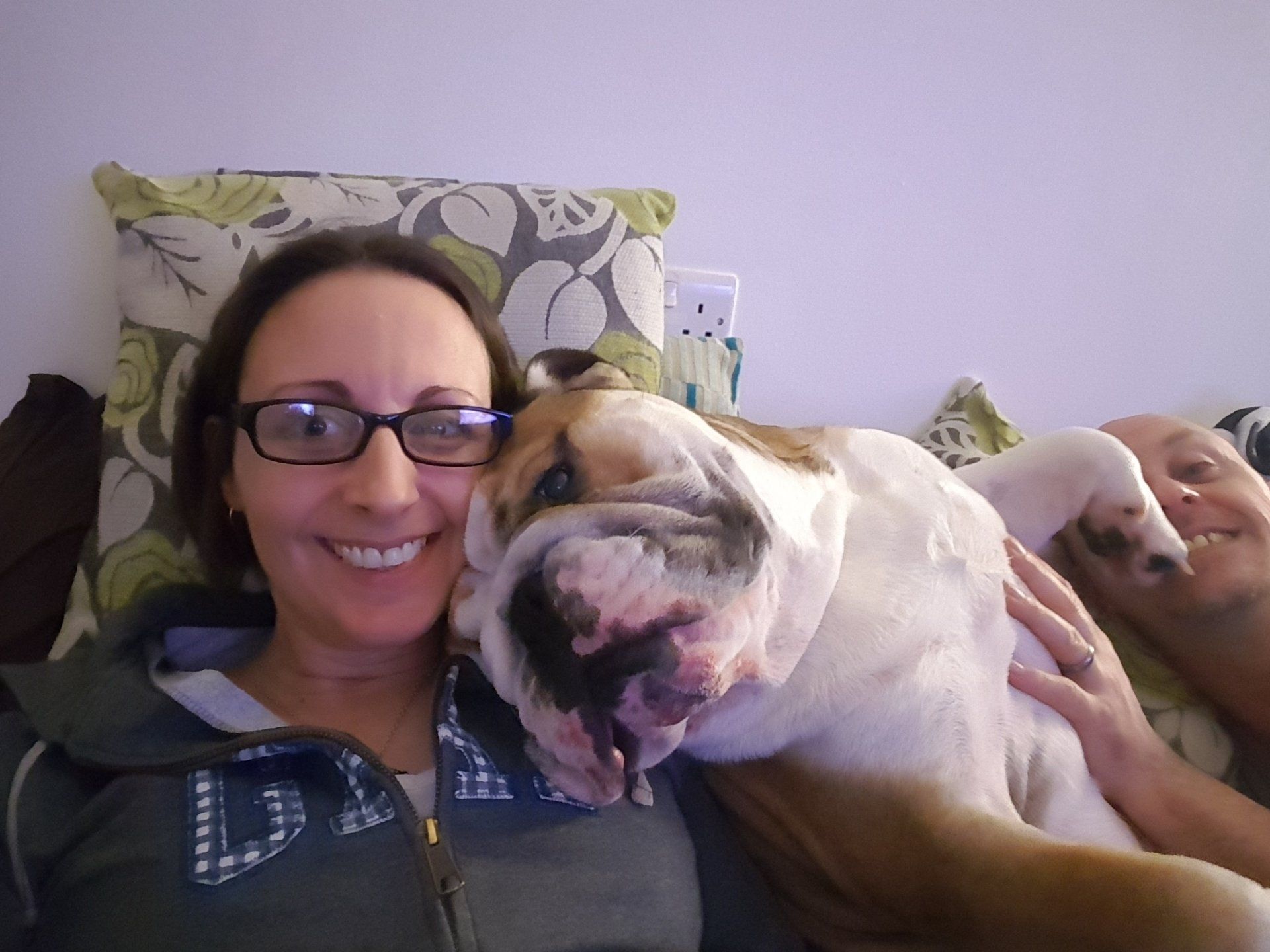
By Gemma Hodson
•
May 23, 2019
The trouble with steroids is that you cannot just stop giving them, you have to wean the dog off gradually. If you do you run the risk of causing organ damage, not to mention a huge spike in the allergic response that was being suppressed by them. Over the course of the next 2-3 weeks I dropped the dose from 2 tablets per day, to 1 and a half, then one ….. you get the idea. Despite the gradual reduction Ron’s feet flared up within days of coming off completely, Vince and I knew it would happen, he described it to me as steroids being the brakes to the immune system response, remove the brake and you get a flood as the immune system goes into overdrive. However the flare up wasn’t as bad as it could have been, that was so long that I controlled his environment and food and carried on using the remedies Vince prescribed. This leads me back to Ron’s other condition, Hyperthyroidism.

By Fay Thomas
•
May 23, 2019
I read all sorts of ‘helpful’ articles online that said if your dog ever shows aggressive tendencies you shouldn’t encourage them to play games like tug-of-war. This is false, it helps release a lot of tension and energy – in fact it’s Tag’s favourite game and he will try and play it all of his toys, even balls, he’s not fussy. I am going to be upfront about resource guarding – there is no magic cure, he will always resource guard however the items he guards are now fewer and we can go days and weeks without any guarding. But then we can have times where it feels like we’ve stepped backwards. At the time I’m finishing this off he has spent the whole week hiding my slippers in his bed. They key to resource guarding, and I learned this the hard way, is not to shout, chase after them, try and snatch the item out of their mouth etc. – none of that helps, in fact it makes the whole situation worse. You get stressed and irritated, the dog gets more possessive as it too is getting stressed. The key was playing swapsies with him – finding something to exchange for the stolen treasure. This could be a favourite toy or food. Most often food worked better for Tag when in the house, however if you put the food near him and then try to pick up the stolen item that he’d dropped next to it this was usually a fail. We had to start slowly, show him the food, get his interest in it and then throw it away from ourselves. This usually led to the item being dropped where he was stood so that he could go to the food – much safer in my opinion than a battle of reflexes, (and let’s be honest a dog will always win that!). For a whole it was a 2-person job as well – mostly because I was still petrified as to how he would react. Over time I started to add the word ‘drop’ and Tag started associating the link between the word, dropping an item and receiving food. Additionally we practiced ‘drop’ a lot at training with his toys so the word became associated with fun as well – he dropped the toy which meant it got thrown away for him to chase. I have to say this really became a beautiful skill and he passed his impulse control element of APDT with flying colours first time around, (not bad for a resource guarding dog).

By Fay Thomas
•
May 23, 2019
But, this wasn’t his only issue so this issue will tell you about the other difficulties he also presented with. Before I do, I am going to apologise. I have always worked very hard not to use aversive training methods with Tag, reward based training has been the key, however, not all of the methods have quite followed the rule – so I am sorry. There were times where it felt like we had tried everything else and couldn’t think of any other solution. I do now however seek advice and enlist help to ensure future methods are up to date, reward based and force free. You only know what you know and at the time I thought I was doing the right thing I now know differently. Poop! So let’s get the unpleasant topic out of the way first – poop! Tag ate his own poop, he’d circle around, do his thing and before you knew it he was turning around and gobbling it up. Absolutely disgusting!! I am not sure why he did this so I did a lot of research online at the time. It may have been a lack of something in his diet so he was trying to re-digest the food (or something along those lines), another reason may have been having his nose rubbed in his own faeces whilst he was being house-trained by his first owners or finally it may have been that having lived in a kennel for a month and therefore his poop not being cleared up straight away he got into a habit of eating it to keep his ‘home’ clean. Now I am absolutely positive that there were much better ways of handling this but in the end my ex resorted to following Tag around the garden when he was let outside and sprinkling chilli powder onto his poop before he had chance to eat it. When Tag did try to pick it up he got a bit of a shock and put it straight back down. After a short while Tag stopped trying to eat his own poop and I’m pleased to say he hasn’t ever tried to take that habit back up. Car Chasing Another habit Tag had was car chasing. You would be quite happily walking down the street towards the field when a car would drive past and suddenly Tag yanks the lead so hard to chase it you almost go flying. If you didn’t let him chase the car he would just try again, and again, and again! Tag absolutely loves walks so whenever he chased a car I would just stop walking, sometimes I would even sit in the middle of the pavement, and we would stay there until several cars had gone past and he hadn’t reacted. As a reward we would start walking again. I’d love to say I brought clicker training into this and lots of tasty food but Tag is so excited by the world he mostly couldn’t care less what food you have in your pocket when you leave the house. Eventually Tag stopped chasing cars and I could walk down the street without fear of being pulled into a road. Now and again he might try and jump towards a car but it seems he only does it these days if he is particularly tense or we’ve had some pretty extreme weather – cars make a lot more noise when they are on a wet road.

By Fay Thomas
•
May 23, 2019
I wanted to be a responsible owner so even before he had his first night in the house I was calling dog training companies to help him learn basic obedience skills. This wasn’t as easy as it might sound. A lot of company’s offer puppy training classes and although he was technically still a puppy he was considered too old to participate. Fortunately I found ‘Naturally Clever Canines’ who held classes for ‘Beginner’s Training’ – the age of the dog didn’t matter but it was aimed at Dog’s who had never been trained. Perfect!! And well, both Helen and Correna were and still are fantastic, so supportive and were so understanding of Tag’s background. There were definitely things that Tag struggled with when working towards his ‘Good Companion Awards’ – notably body touching – but both of them worked with him at his own pace, we took it step-by-step and week-by-week and whenever he showed signs of it all being a bit too much, we stopped. He passed every test and we have all of the rosettes to prove it! If I could give you any advice for bonding with your dog I would recommend going to a Training Class. I have always worked full-time from the day Tag came home and the least I could give him was 1 hour of my undivided attention each week. He got 1 hour in a local community centre learning new things with me, we learned together without the distractions that come with being at home, (cooking dinner, the housework, something on TV – you know what it’s like). Also, I can’t say it enough – patience, understanding and don’t give up!
Get started
Contact us to find out more or to book your dog session using the Contact us page or call now on 07479 452 244.


